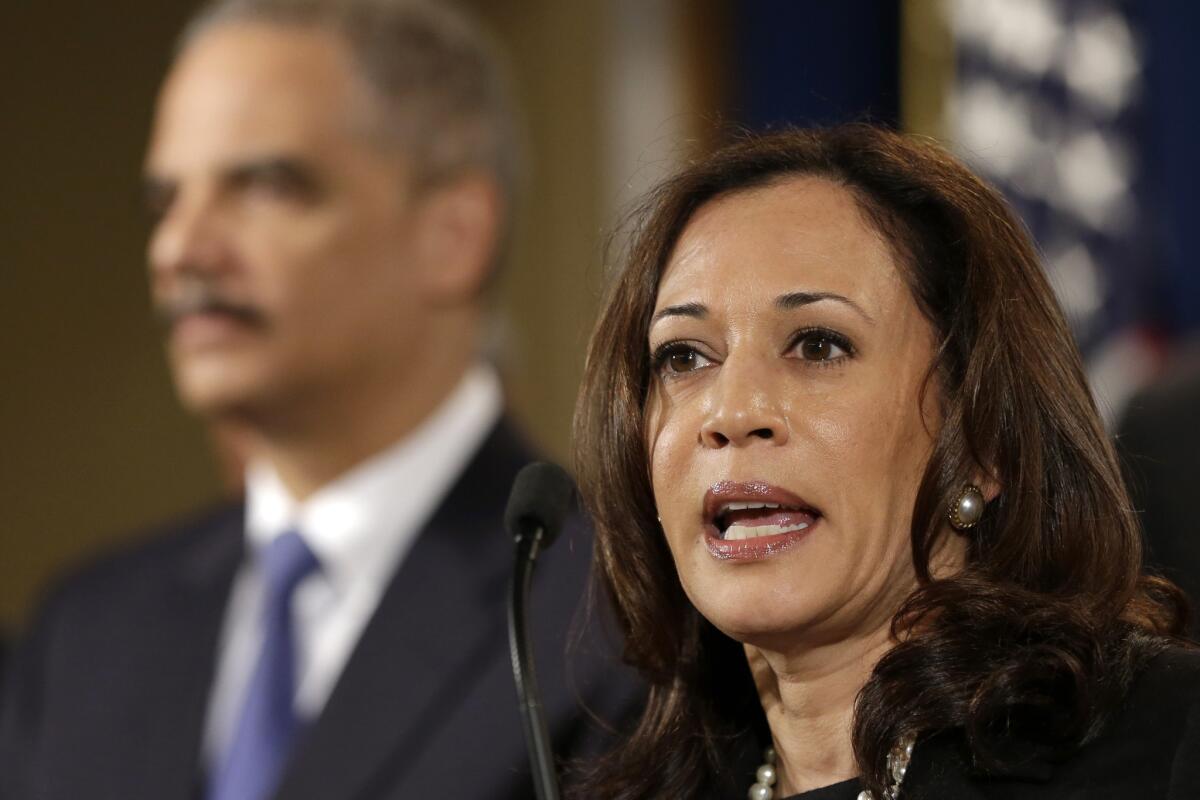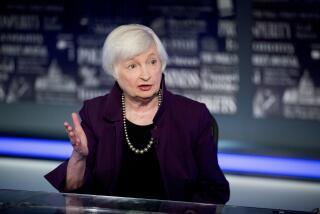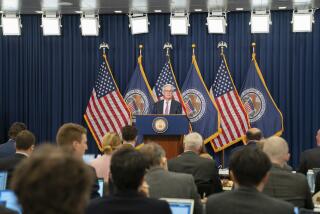Is S&P; to blame?

- Share via
Federal and state prosecutors sued the credit rating agency Standard & Poor’s this week for allegedly defrauding investors by giving inflated ratings to complex mortgage-backed securities that proved all but worthless after the housing bubble burst. The cases raise difficult questions about the freedom to express an opinion without being held liable if it’s wrong. Nevertheless, it’s worth exploring whether S&P; and its rivals deliberately soft-pedaled how risky those securities were in order to boost their bottom lines.
There’s plenty of blame to go around for the subprime mortgage meltdown and the subsequent Wall Street collapse, starting with the mortgage brokers and lenders who didn’t care about borrowers’ ability to repay. But the rating agencies played a particularly important role in pumping up the housing bubble. By giving their top rating to many securities backed by home mortgages, including subprime loans, they enabled more of these investments to be sold. They also encouraged federally insured banks, public pension funds and other taxpayer-backed institutions to sink money into what would become a financial black hole.
On Tuesday, the Justice Department and California Atty. Gen. Kamala Harris announced that they had filed suit against S&P; for violating a federal bank fraud law and a state false claims statute. Both alleged that the agency promised independent, objective evaluations but that it in fact used a rating system it knew to be flawed — and which helped S&P;’s customers sell securities and generated more business for S&P.; The agency denied the allegations and argued that it simply expressed an opinion that investors were free to disregard.
Harris and the Justice Department have to walk a fine line in this case. The prevailing wisdom in the mid-2000s was that property values were heading endlessly higher. If the bubble hadn’t burst, S&P;’s ratings wouldn’t have proved so horribly wrong. Simply offering a bad opinion based on poorly drawn assumptions shouldn’t be grounds for liability. On the other hand, if the state and federal governments are correct that S&P; disregarded the danger signs and skewed its opinions to serve its own interests, contrary to what the company advertised, that’s another story.
There’s no denying that the country’s credit rating agencies serve a valuable purpose. Few investors could afford to do their own risk analysis on mortgage-backed securities. If the rating agencies disappeared, the market for these and other asset-backed investments would evaporate, potentially leading to another credit crunch and sending the economy back into a tailspin.
It’s worth remembering that S&P;’s two main rivals were just as bullish about the housing market, and because they too were paid by the banks selling the securities they rated, they had the same inherent conflict of interests. The implicit threat in the state and federal lawsuits, which seek multiple billions of dollars in damages from S&P;, is that all three of the leading credit rating agencies could be put out of business. That might delight Occupy Wall Street, but it would be an economic disaster.
More to Read
A cure for the common opinion
Get thought-provoking perspectives with our weekly newsletter.
You may occasionally receive promotional content from the Los Angeles Times.










